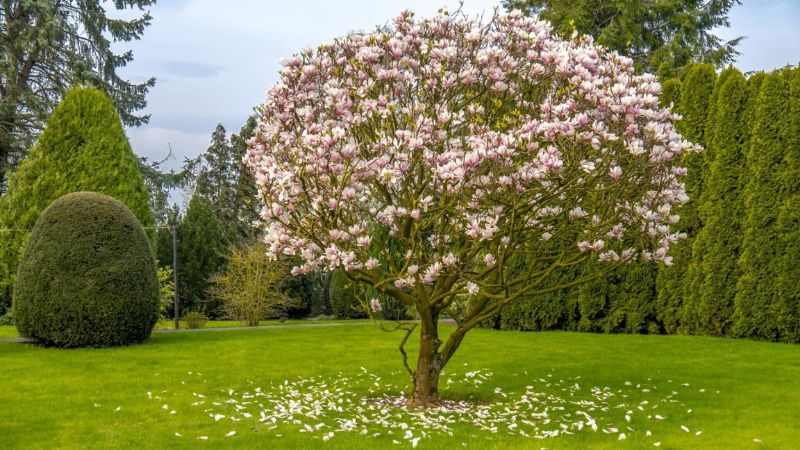Magnolia trees and shrubs are renowned for their stunning flowers, captivating fragrance, and versatile growth habits. These plants, belonging to the Magnoliaceae family, are native to Asia, the Americas, and the West Indies. Their striking appearance makes them a favorite in gardens and landscapes worldwide. This blog will explore nine popular types of magnolia trees and shrubs, highlighting their unique features, growth requirements, and ornamental value.
1. Southern Magnolia (Magnolia grandiflora)
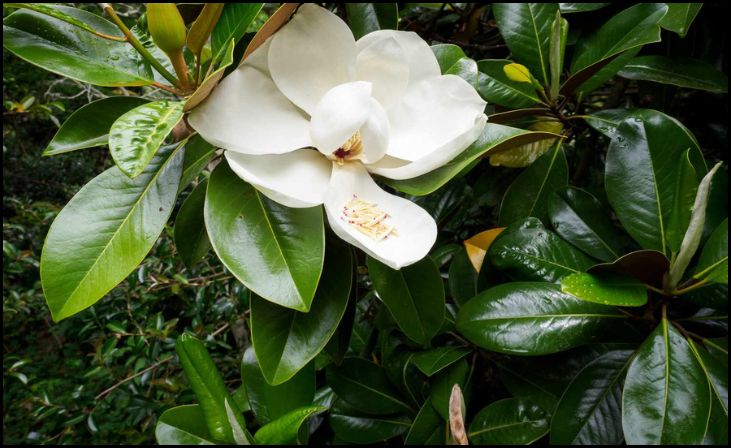
The Southern Magnolia, also known as Bull Bay, is an iconic tree in the southeastern United States. It is famed for its large, fragrant white flowers and glossy, evergreen leaves. The flowers, which can be up to 12 inches in diameter, bloom from late spring through summer.
Key Features
- Height: 60-80 feet
- Spread: 30-40 feet
- Leaf Color: Dark green, leathery
- Flower Color: White
- Bloom Time: Late spring to summer
Growth Requirements
Southern Magnolias prefer full sun to partial shade and well-drained, acidic soil. They are hardy in USDA zones 7-9 and can tolerate heat and humidity, making them ideal for southern climates.
2. Saucer Magnolia (Magnolia x soulangeana)

The Saucer Magnolia is a hybrid between Magnolia denudata and Magnolia liliiflora. It is celebrated for its large, tulip-shaped flowers that appear in early spring before the leaves emerge. These blossoms range in color from white to pink to purple.
Key Features
- Height: 20-25 feet
- Spread: 20-25 feet
- Leaf Color: Medium green
- Flower Color: White, pink, purple
- Bloom Time: Early spring
Growth Requirements
Saucer Magnolias thrive in full sun to partial shade and prefer well-drained, slightly acidic soil. They are hardy in USDA zones 4-9 and require protection from late frosts to prevent flower damage.
3. Star Magnolia (Magnolia stellata)
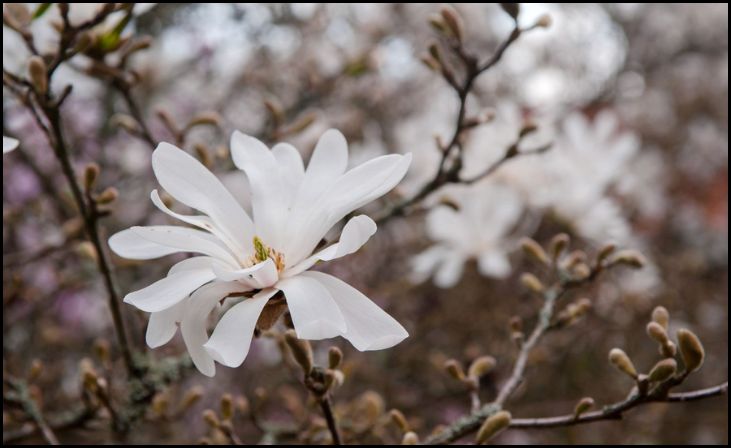
The Star Magnolia is a small, deciduous shrub known for its star-shaped flowers. These flowers are white or pink and consist of 12-18 narrow, strap-like petals. They bloom in early spring, often before other plants have started to leaf out.
Key Features
- Height: 15-20 feet
- Spread: 10-15 feet
- Leaf Color: Dark green
- Flower Color: White, pink
- Bloom Time: Early spring
Growth Requirements
Star Magnolias prefer full sun to partial shade and well-drained, slightly acidic soil. They are hardy in USDA zones 4-8 and can be used as focal points in small gardens or as part of mixed shrub borders.
4. Sweetbay Magnolia (Magnolia virginiana)
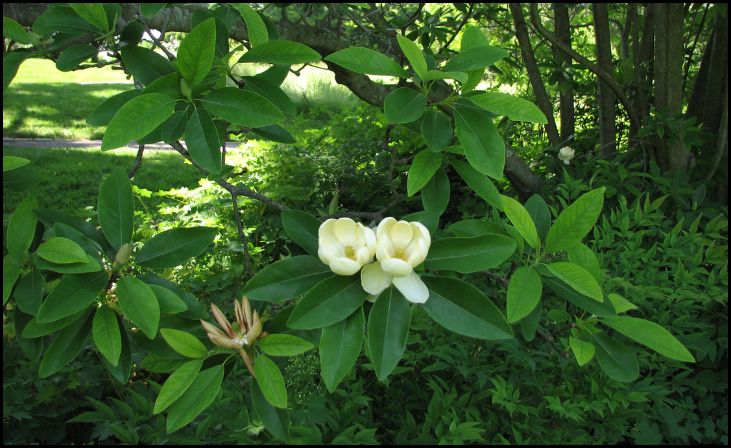
Sweetbay Magnolia, also known as Swamp Magnolia, is a semi-evergreen tree native to the southeastern United States. It produces creamy white, lemon-scented flowers from late spring to early summer. Its leaves are bright green on top and silvery underneath.
Key Features
- Height: 10-35 feet
- Spread: 10-20 feet
- Leaf Color: Bright green (top), silvery (bottom)
- Flower Color: White
- Bloom Time: Late spring to early summer
Growth Requirements
Sweetbay Magnolias thrive in full sun to partial shade and prefer moist, acidic soils. They are hardy in USDA zones 5-9 and are often found near streams, swamps, and other wet areas.
5. Lily Magnolia (Magnolia liliiflora)
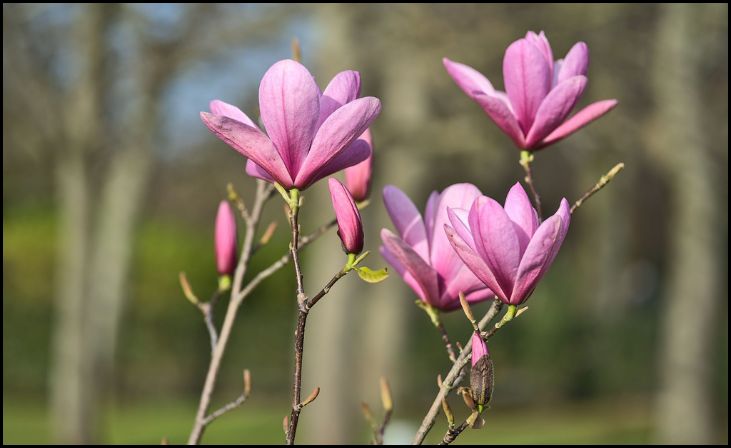
Lily Magnolia, also known as Mulan or Purple Magnolia, is a small deciduous shrub native to southwest China. It is noted for its deep purple, tulip-shaped flowers that bloom in early to mid-spring. The flowers have a light fragrance and appear before the leaves.
Key Features
- Height: 8-12 feet
- Spread: 8-12 feet
- Leaf Color: Dark green
- Flower Color: Purple, reddish-purple
- Bloom Time: Early to mid-spring
Growth Requirements
Lily Magnolias prefer full sun to partial shade and well-drained, slightly acidic soil. They are hardy in USDA zones 5-9 and are ideal for small gardens and urban landscapes.
6. Cucumber Tree Magnolia (Magnolia acuminata)

The Cucumber Tree Magnolia is a large, deciduous tree native to eastern North America. It gets its name from the green, cucumber-shaped fruit that appears after flowering. Its yellow-green flowers bloom in late spring and are less showy than other magnolia species.
Key Features
- Height: 50-80 feet
- Spread: 30-40 feet
- Leaf Color: Dark green
- Flower Color: Yellow-green
- Bloom Time: Late spring
Growth Requirements
Cucumber Tree Magnolias prefer full sun to partial shade and well-drained, acidic soil. They are hardy in USDA zones 3-8 and are often used in large landscapes and parks.
7. Anise Magnolia (Magnolia salicifolia)

Anise Magnolia, also known as Willow-leaved Magnolia, is a deciduous tree native to Japan. It is named for its anise-scented leaves and bark. The tree produces white, fragrant flowers with a hint of pink at the base in early spring.
Key Features
- Height: 20-30 feet
- Spread: 15-20 feet
- Leaf Color: Bright green
- Flower Color: White with pink base
- Bloom Time: Early spring
Growth Requirements
Anise Magnolias prefer full sun to partial shade and well-drained, slightly acidic soil. They are hardy in USDA zones 5-8 and make excellent specimen trees in gardens and landscapes.
8. Umbrella Magnolia (Magnolia tripetala)

Umbrella Magnolia is a deciduous tree native to the eastern United States. It is named for its large, umbrella-like leaves that can be up to 24 inches long. The tree produces large, creamy white flowers in late spring to early summer.
Key Features
- Height: 15-30 feet
- Spread: 10-15 feet
- Leaf Color: Bright green
- Flower Color: White
- Bloom Time: Late spring to early summer
Growth Requirements
Umbrella Magnolias thrive in full sun to partial shade and prefer moist, well-drained soils. They are hardy in USDA zones 5-9 and are often found in woodland gardens and naturalized areas.
9. Ashe’s Magnolia (Magnolia ashei)
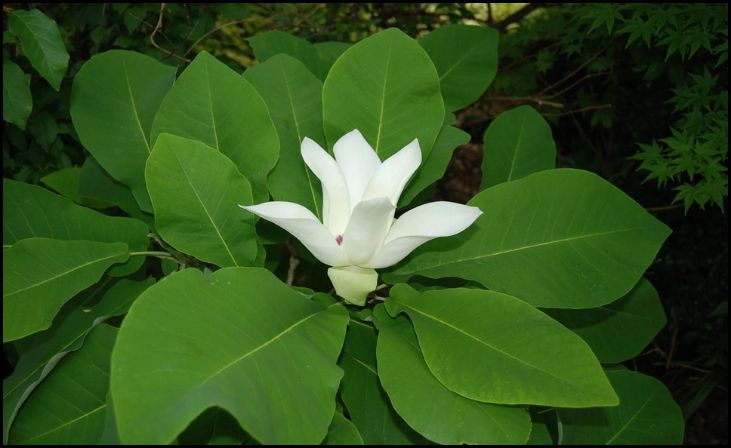
Ashe’s Magnolia, also known as Florida Ashe Magnolia, is a rare, deciduous tree native to the Florida Panhandle. It produces large, fragrant white flowers in late spring to early summer. The leaves are also large, adding to the tree’s ornamental appeal.
Key Features
- Height: 15-20 feet
- Spread: 10-15 feet
- Leaf Color: Bright green
- Flower Color: White
- Bloom Time: Late spring to early summer
Growth Requirements
Ashe’s Magnolias prefer full sun to partial shade and well-drained, slightly acidic soil. They are hardy in USDA zones 6-9 and are best suited for protected areas to preserve their rare status.
Conclusion
Magnolia trees and shrubs are a diverse group of plants that offer a wide range of ornamental benefits. Whether you desire the majestic presence of a Southern Magnolia or the delicate charm of a Star Magnolia, there is a magnolia to suit every garden and landscape. By understanding the unique characteristics and growth requirements of each type, you can choose the perfect magnolia to enhance your outdoor space. These plants not only provide stunning visual appeal but also bring delightful fragrances and seasonal interest to gardens worldwide.

